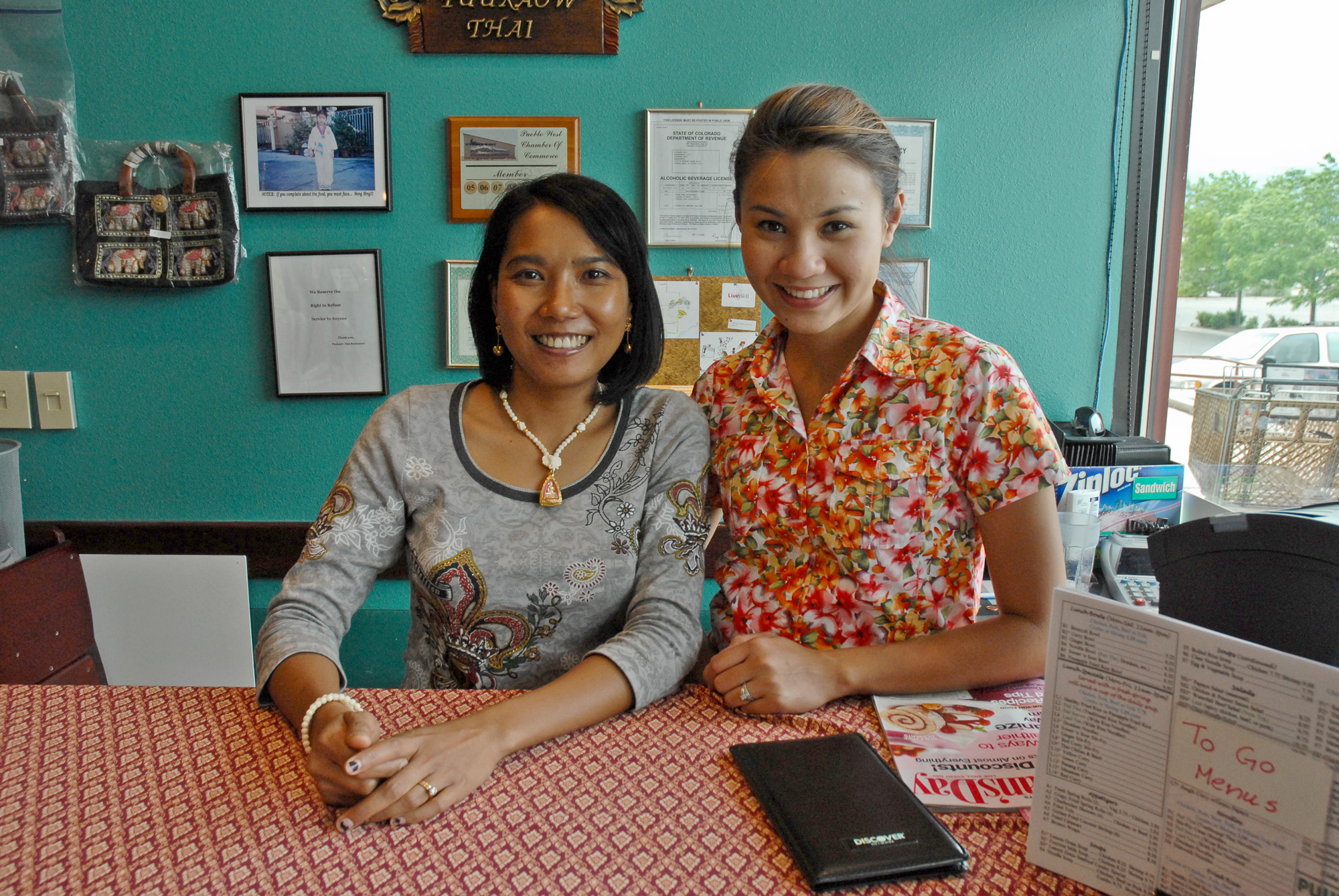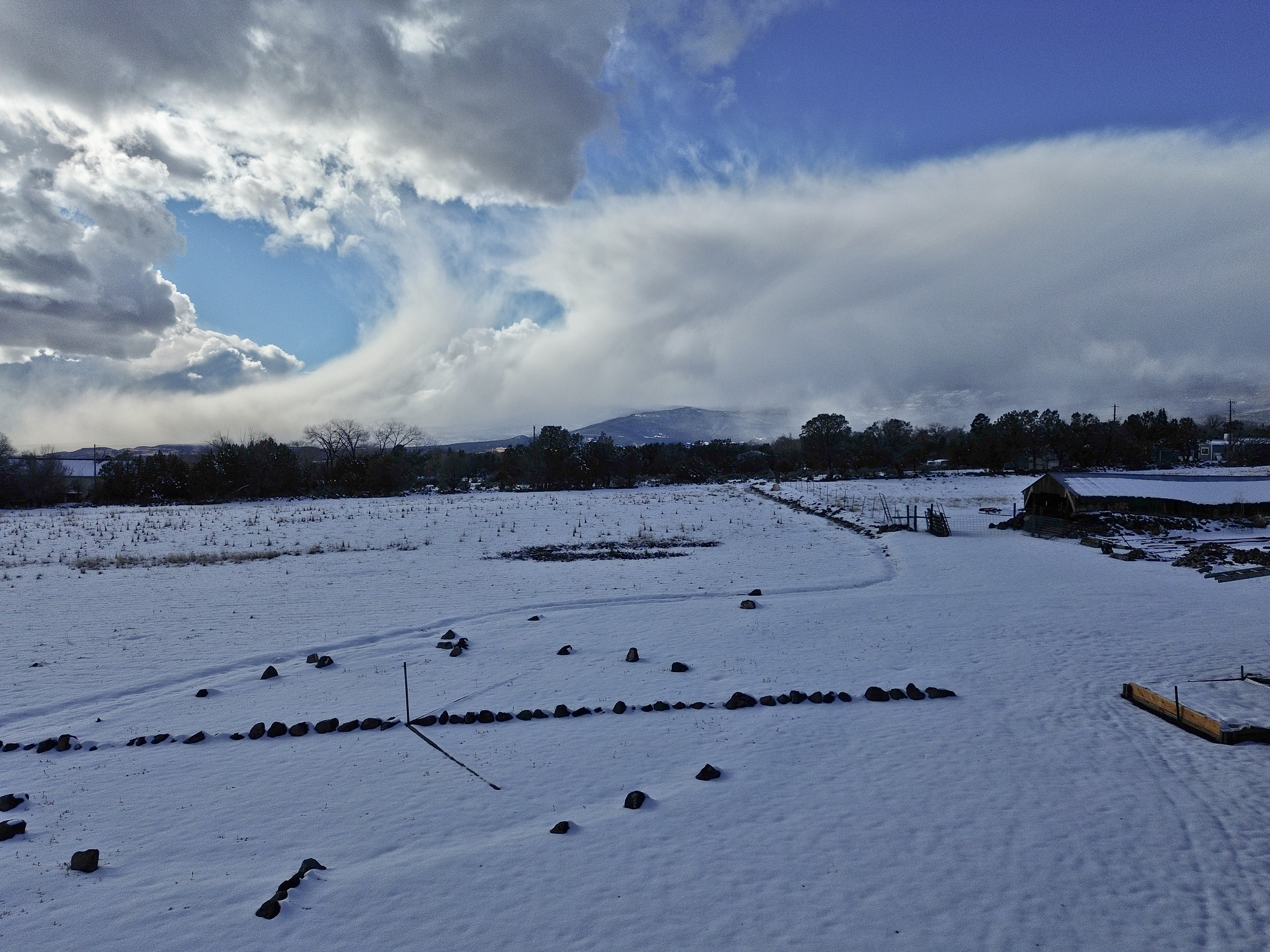
watching Hells Kitchen
hope revived
watching Hells Kitchen
watching Hells Kitchen
watching Hells Kitchen
April Fool
[ED: Sorry for the posting-re-posting gaffe yesterday, here’s the final.]
Expensive eggs, remember that, expensive eggs.
I wake up in the middle of the night, there is a far-off but very loud drone grinding into the usual night silence. Helicopters? Trucks on the highway? There is no highway nearby. Ah, yes, it’s gotten too cold. Too cold for the delicate fruit blossoms that have exploded in the past 72 hours. They will not survuve. The surrounding orchards have started their huge air-circulation fans, punching through the inversion that threatens those splendid, tiny, profuse indicators of spring.

Forget the trees for a moment, and shift to a completely other topic, equally chilling.
I confess that I have recently—in conversation with friends—made the anxious prognostication that “within the next fours years, or very likely within this year, we will see the implementation of a full-on police state.” Old friends likely know full well, by now, that I am something of a critic of the US as an Imperial power and believe that the Military-Industrial+Oligarch Complex has been and is a direct threat to civil society (as Eisenhower predicted 17 January 1961). I also confess that I’m wrong, I’ve been wrong all along. The police state is already here, it’s been here for years. It just hasn’t come for Us yet, it’s still busy with Them. It is so blatant, though, that it’s hard to see right in front of Us—thinking both that “it can’t happen to me” and “those other people deserve to be taken away for what they’ve done.” There’s plenty of historical precedence for the time when a nation-state sinks into a perverse and dominating malaise of fear of the Other, and any form of ethical, empathetic action—versus ideological purity—is suspect.
…
When the range of factors that can get a person arrested stretches from political speech to a paperwork error, we are in territory described by the Russian saying, “Give us a person and we’ll find the infraction.”
…
Back in 1979 or so, when I was a student at Mines, I was visiting my sister in the Bay area during spring break. On the day I was to fly back to Denver, we were in Oakland, and I realized that I could probably catch a direct flight from there instead of having her drive me all the way down to the San Francisco airport. Easier for everyone. It was so, paper tickets changed for no charge, and in an hour I was on a flight back home.
more “April Fool”
watching Hells Kitchen
portrait, Paul
group portrait, family, friends, with mannikin
detritus

Over time, I gathered more than four tons of ferrous and non-ferrous metal scrap on the property and took it to recycling. There was an archaeological aspect to the process that was fascinating, and I ended up keeping (temporarily) some of the more interesting bits of detritus. A few found a home on top of the wood stove that warms the house each winter. I saved many more but wish I had photographed the endless variety. It was dominated by the banal: glass shards, nails, nuts& bolts, and bottle caps, but everything from friendship bracelets and toys to music cassettes to many random tools to 100-year-old broadsheets and canning jars showed up. I did reuse/repurpose anything that was reusable! The thirty-plus horseshoes found randomly around the entire property went, one to each visitor, a few to JR, and I kept two for posterity (again, temporary, I’m definitely not taking those to Iceland!).
I often mused what a metal-detector would show up, although the sheer quantity of objects and their wide distribution it would probably end up as an annoyance. And, in the end, who’s got time for this noise? Clearing out evidences of human occupation is truly an endless occupation. And one that, in this time, is use-less.
portrait, Sharon

to be scattered
When the time comes. (or, alternatively “along the edge or at the center.”) These are the places to be scattered to the winds, the sky, the earth, the cosmos: stardust to stardust: heaven, I’m in heaven, when were out together dancing cheek to cheek, etc.
Warm Springs Cliff, Dinosaur National Monument, Colorado:
40°31’39.92″N, 108°55’48.08″W

North end of Hrísey, Eyjafjarðarsýsla, Iceland:
66° 1’34.85″N, 18°24’35.91″W
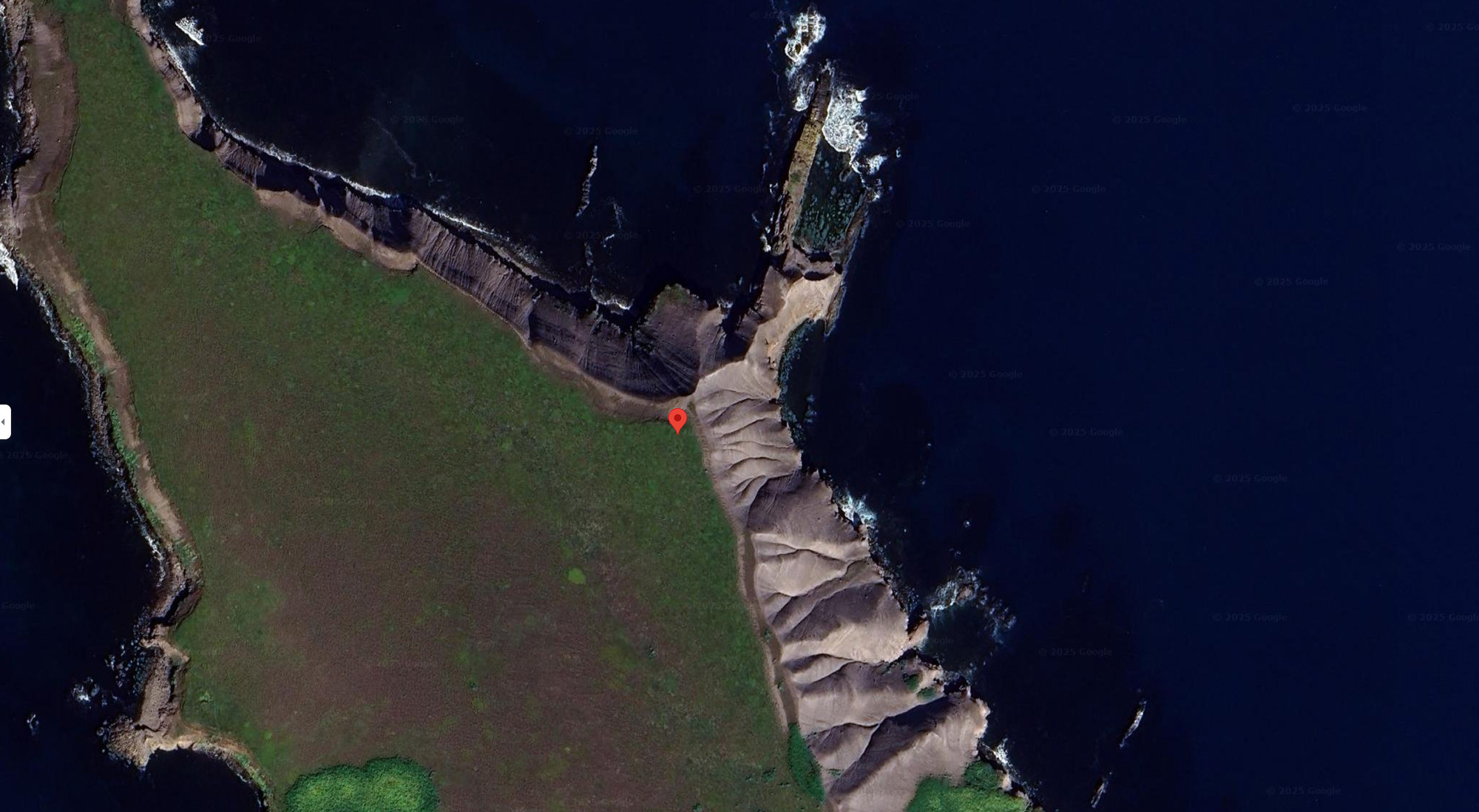
Center of the Universe, San Luis Valley, Colorado:
37°39’48.16″N, 105°49’45.22″W

group portrait, Radar Evaluation Party
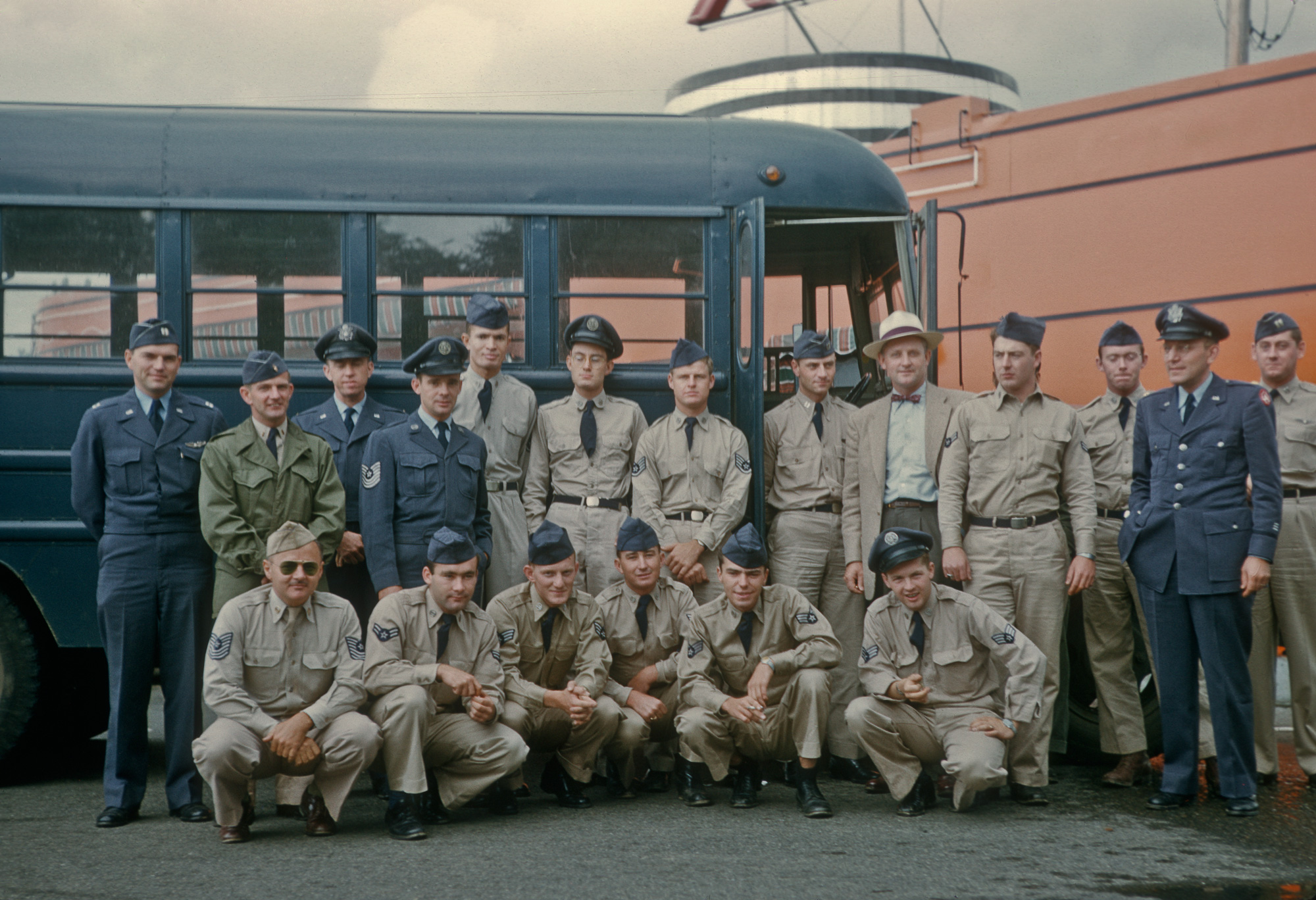
watching Hells Kitchen
portrait, Mike, Kaolin Rose, and Joanne
the capture of the administrative state
While there are plenty of paeans on what Amurika *is*—the City upon a Hill, The Great Experiment, a Melting Pot, the Global Police Officer, and so on—a nation cannot function without its administrative state. At the moment when that administrative state is fully encircled and infiltrated by oligarchic actors that threaten to usurp the powers inherent in the state, the nation itself is at great risk.

The relationship between the administrative state and a nation’s survival exists in precarious balance. While administrative institutions provide essential continuity and capacity-to-act that strengthens state resilience against complex challenges, this relationship becomes severely compromised when oligarchic interests capture these same institutions. The administrative apparatus ideally serves as both operational backbone and democratic counterweight to concentrated power, but cannot fulfill either function when redirected toward private gain rather than public purpose. This slide towards a fully parasitic oligarchy has been underway in some form for the duration of the nation, but following the demise of any guardrails on money in elections, the process, as it nears completion, threatens the fundamental viability of the nation.
When administrative bodies become extensions of oligarchic influence, a terminal cascade begins: public trust erodes as citizens perceive state unresponsiveness, inequality intensifies through biased resource allocation, and state autonomy weakens as decision-making becomes constrained by elite preferences. This capture undermines the fundamental legitimacy that allows nation-states to persist through crises and transitions. The survival of the nation-state thus depends significantly on maintaining administrative institutions that are sufficiently autonomous from both political volatility and oligarchic capture—a challenge that grows increasingly difficult in an era of transnational pressures, vast income inequality, and concentrated economic power.
Looking at the relationship between the administrative state, oligarchic influence, and nation-state survival in the contemporary United States reveals several concerning patterns:
The US is experiencing significant tension between its administrative institutions and democratic legitimacy. Federal agencies face challenges from both increasing political polarization and economic concentration. Regulatory bodies like the SEC, EPA, and FCC operate in an environment where industry influence through lobbying, revolving door employment, and campaign finance creates persistent, creeping risks of capture. This dynamic has contributed to public perception that government serves elite interests rather than any common welfare.
The administrative state’s credibility has been further stressed by political attacks characterizing it as an unelected “deep state” disconnected from democratic accountability. This narrative, combined with real instances of special interest influence, has accelerated erosion of institutional trust. Recent polling shows historically low confidence in government institutions among Americans across the political spectrum. This development considered in light of the fact that very few Amurikans even know what services many departments of the Executive Branch perform. Or what the three branches of the Federal government are to begin with. This measure of trust deficit is a fundamental challenge to state legitimacy and stability, as is the lack of fundamental education in civics. There is much evidence that the administrative apparatus is struggling to maintain both technical competence and perceived democratic responsiveness in a polarized environment where economic power is increasingly concentrated among a tiny group of individuals and corporate entities.
From a Confucian perspective, the remedy to such administrative capture lies not primarily in structural reforms but in moral revitalization. Confucian philosophy would interpret oligarchic interference as a symptom of ethical decay among both governing elites and society. The solution requires cultivating virtuous leadership (junzi) that views its position as a sacred trust rather than an opportunity for personal gain. Administrative officials must recommit to proper ritual conduct (li) that reinforces their obligations to serve the people rather than private interests (i.e., a demonstrated deference to the Constitution and to its moral framework, *not* obeisance to Dear Leader). This approach emphasizes that effective governance emerges not merely from institutional design but from the moral character of those who serve within institutions. Thus, the Confucian response would prioritize ethical self-cultivation among administrators and leaders, creating a moral ecology where serving the public good becomes internalized as the highest virtue, thereby restoring the proper relationship between state and society that sustains national cohesion and legitimacy.
The current Amurikan administration is clearly demonstrating an advanced state of acute moral decay. This is not a new development, but a culmination of a number of structurally-determined processes. Is there any possibility of wide-spread moral ‘recovery’? Perhaps, but it is crystal clear that the so-called leaders of the government are largely in the grip of a deeply corrupt fever of influence and power ruled by Machiavellian struggle and a blatant lust for power. Those who tear the administrative state down instead of examining their own hearts for moral clarity will be guilty—with little chance for redemption—both of the destruction of Self, but also the widespread destruction of stability and safety for millions of Others.
portrait, Steini
group portrait, Nick, Deb, Shirley, Kieran, and Ava
field work
portrait, Gaan and Tasani
field work

Much as I dislike putting stuff into a landfill, can’t avoid it sometimes. Better to recycle, re-use, down-cycle, etc. But when faced with liquidating the house and property, there are some things that end up extraneous to any possible usage. Thus a trip to the somewhat apocalyptic scenario that is the local landfill. It’s set in “The Adobes”, dramatic Mancos Shale (Prairie Canyon Member, Upper Cretaceous) badlands on the southern flank of Grand Mesa.
It is quite depressing to see what isn’t being recycled … all kinds of metal, glass, wood. A picker could make a fortune with a truck, just taking scrap metal to Recla (“We put the “S” in (s)crap!” down in Montrose). I snagged a few small aluminum bits that I will add to my next—and hopefully last—recycling run from the property. But the heavy machinery rigs are running around crushing, compacting, and smoothing the detritus, so, it’s not particularly safe trying to retrieve anything.
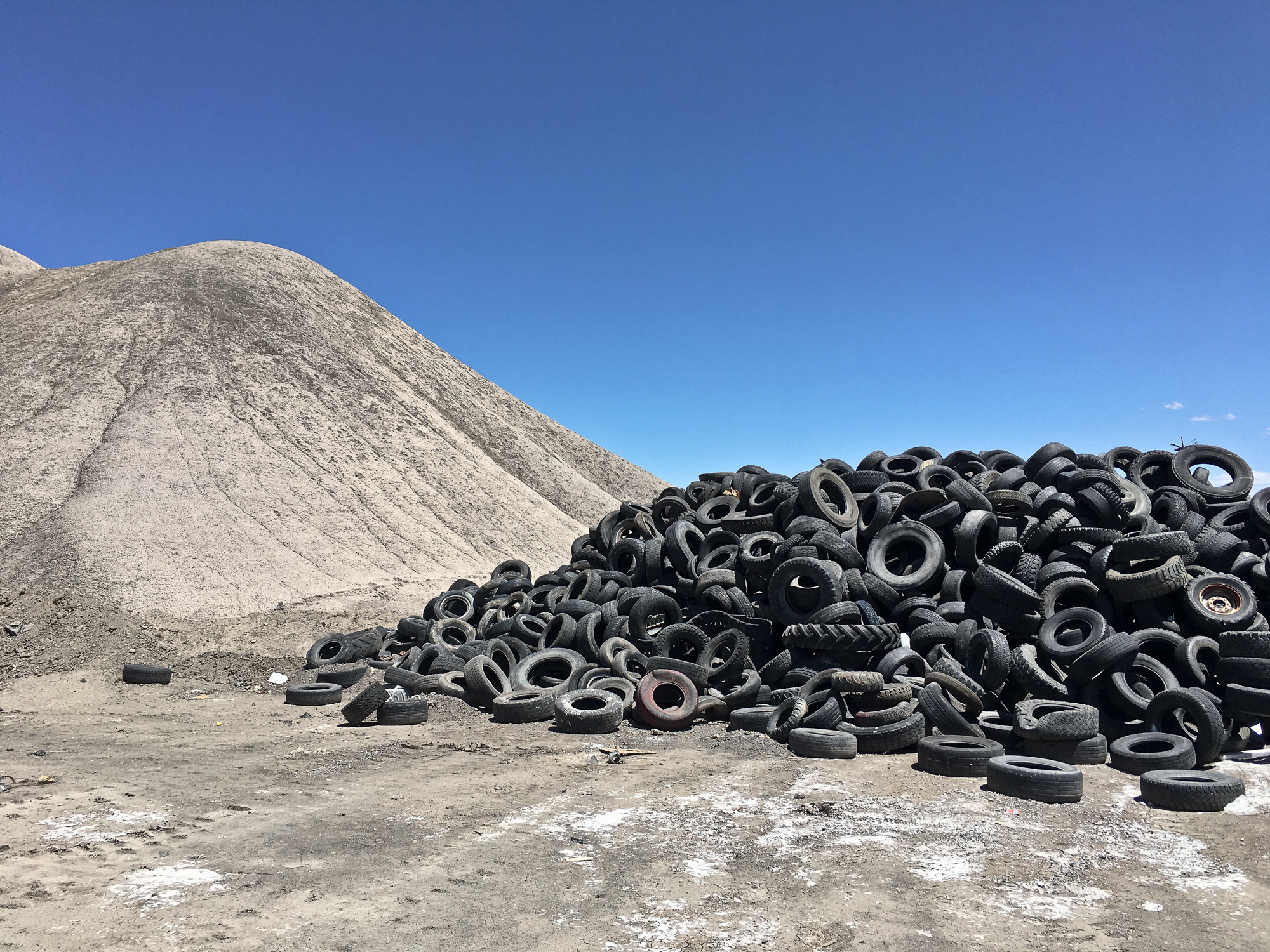
glitchworks
along the road’s verge
portrait, Mabrie
along the road’s verge
along the road’s verge
portrait, urchin at the train station
house for sale
Open season! If you are looking for a retreat from the busy world, one with fertile soil, water rights, and high agricultural potential, next to some of the best Nordic skiing in the US, silent nights with dark starry skies, bright days with a sky to watch, read on. There’s plenty of wildlife: every sort of raptor, ravens, Colorado bluebirds, jays, magpies, flickers, marmots, foxes, deer, and ground squirrels, along with occasional coyotes, mountain lions, elk, and bears (haven’t personally seen these latter two on my property per se, but they are around!). The property is at 6500 ft (2000 m) on the southern flank of Grand Mesa with fine spacious views of the Uncompaghre Uplift, the Mesa, and the San Juan Mountains to the south. I’ve got decent neighbors as well.

I’ve put in a lot of sweat equity improving both the entire property and the house: removing tons (literally) of detritus from prior residents, caring for the trees and other vegetation, re-doing the bathroom, bedroom, and kitchen (with its ever-changing view from the sink!); upgrading parts of the roofing; re-doing the deck; and the whole house is scheduled to be painted next week. Also, because the property is largely open, it is insurable (unlike many rural properties in the state)! This is becoming a serious issue because of climate change and risk of natural disasters! The property is essentially not at risk of flooding, landslide, rockfall, earthquake, or fire.
Much of the process has followed the principle of sustainable DWAM (doing with available materials), and with the idea of sustainably re-wilding the property.
– 13.4 acres (5.4 hectares) 18145 Surface Creek Road, Cedaredge.
– 2 bedroom, 1 bath; 1362 sq ft; 300 sq ft finished root cellar w/ water and electricity; 600 sq ft workshop/outbuilding; 2 additional outbuilding/stable areas; metal roofing throughout; some fencing supplies available;
– several producing fruit trees: apricot, apple, cherry plum.

– Electricity (DMEA) to house and garage (220v) with a 30 amp RV hook-up.
– Upper Surface Creek Water Users Association (USCDWUA) provides domestic water from their treatment plant about five miles upstream
– Agricultural water shares in Leon Lake and Marcot Park Ditch and Reservoir Companies.
– Fiber-optic internet to the house (up to 8gb available) via Elevate.
– Eligible as an Agricultural Property.
– Cedaredge is a small town about two miles away. It’s got a decent grocery store, laundromat, library, dispensary, thrift stores, doctor/dentist offices, a handful of restaurants, excellent acupuncture/CTM center, the Grand Mesa Arts Center, elementary-through-high schools, and a friendly Ace hardware store. There are abundant fruit, vegetable, wine and other organic sources locally, and if you are a carnivore, there’s plenty of game.
– Delta (17 mi); Paonia (32 mi); Montrose (40 mi); Black Canyon of the Gunnison National Park (40 mi); Grand Junction (50 mi); Telluride (100 mi); Moab UT (150 mi); Denver (250 mi).

– if escape from this pleasant reverie is necessary, both Montrose and Grand Junction have airports with daily direct flights to DFW, Salt Lake, Denver, Los Angeles, Phoenix, Las Vegas, and other points.
— if you know anyone who would be interested, let me know, I’m prepared for sale-by-owner. Price $400,000. The house will be listed in a few weeks at $459,000, I will not be signing with a RE agent until then.

portrait, Brian, Donna, and Zoe
field work
group portrait, 4th graders
field work
DMNS Meteorite Collection
Colleagues at the Denver Museum of Nature and Science, led by Dr. James Hagadorn, the Curator of Geology at the museum, released a fine 36-page publication The Meteorite Collection of the Denver Museum of Nature & Science. It contains a fascinating history of the collection with back stories on some of the many specimens, along with a reference list and a full catalog of the collection. It’s available as a free pdf download, but the paper copy is well worth the $3.16 price-point (how do they manage to sell it for so little??). It’s the next best thing to a visit to the DMNS … when in Denver!
RT-0046503-dmns-sr-17-meteoritesFollowing is a selection of meteorite specimens in the Denver Museum of Nature and Science collection:

more “DMNS Meteorite Collection”
field work
group portrait, gallery
watching Hells Kitchen
watching Hells Kitchen
clouds and meaninglessness


However, a few glances at most were cast upward, perhaps followed by isolated comments about how beautiful the evening was, for sights like this were not exceptional, on the contrary, hardly a day passed without the sky being filled with fantastic cloud formations, each and every one illuminated in unique, never-to-be-repeated ways, and since what you see every day is what you never see, we lived our lives under the constantly changing sky without sparing it a glance or a thought. And why should we? If the various formations had had some meaning, if, for example, there had been concealed signs and messages for us which it was important we decode correctly, unceasing attention to what was happening would have been inescapable and understandable. But this was not the case of course, the various cloud shapes and hues meant nothing, what they looked like at any given juncture was based on chance, so if there was anything the clouds suggested it was meaninglessness in its purest form.

The photos were made around the same time Karl Ove was living in Bergen: I was teaching at KHiB (now the Faculty of Fine Art, Music and Design, University of Bergen). Probably no need to explain the resonance of this particular passage to other entries on this blog.
from the archive


My favorite aunt, Mary MacKenzie, was Dr. Toms’ secretary for many years. She is in both photos, with dark hair, at the top of the stairs in the middle, holding her sunglasses and camera, and on the second photo, fourth from the far left, again holding her sunglasses, up in the air. Dr. Toms, aka “Kahu,” is the somewhat impassive fellow in the dark suit and sunglasses looking more like a Secret Service agent … Hawaii-Five-O, here we come!
The Long Night of Radio Art

At the vilma offices thanks to Gediminas and Nomeda — for hosting the stream I’m sending to Steve of art@radio in Baltimore who has an elaborate studio set-up for the live streaming he’ll be doing from there to The Long Night of Radio Art that is part of the Reinventing Radio project of KunstRadio. the whole project will be broadcast on FM, shortwave, a special 5.1 digital satellite transmission, and online. (Taking a breath). Yeah, live online. Meet August on the IRC channel broadcasting from Santa Barbara.



“jamming radiophonic space,” modulates the interplay of radio, Internet, wireless transmission, an private space.
This experientially diverse and geographically scattered group will contribute to “jamming radiophonic space” through decentralized, networked, and collaborative strategies of production and distribution. Streaming feeds from microphones places in and around artists’ workspaces will be gathered along with ambient sound called in via wireless and landline phones; requests have already gone out over electronic list-serves for individuals to call in and point their live phones for 10 or 15 minutes towards sounds emblematic of their time and place.
These sonic interruptions will then be mixed and processed into a stream of “hot media” by artists present in the Baltimore studio space using baby monitors, short-wave radios, software, and other improvised sound tools. The stream will then be made available world-wide to streaming clients via wired and wireless data connections.
Artists:
Chris Basile, Goeff Bell, Steve Bradley, Phaye Poliakoff-Chen, Chad Eby, John Hopkins (Vilnius, LT), Brendan Howell, John Hudak, Jacob Kirkegaard, Tim Nohe, Joe Reinsel, Jodi Rose, Bill Shewbridge, Nicole Shiflet, John Sturgeon, and others …

watching Hells Kitchen
portrait, Tim and Mary
documentation
[ED: Documentation, yes. That’s all I do with the photography, all I ever did. Documenting immediate life scrolling by. And let that accumulate into a modest mass of imagery. Extracted from the mass, they appear fragmentary, and not so replete with ‘meaning.’ Here’s a handful from a warm 1988 summer’s end.]
Upon my re-patriation after three months in Iceland, Germany, Italy, France, Luxembourg, Denmark, Norway, and Sweden, following is a sample of what happened hanging with Willy & Andy in Hoboken:

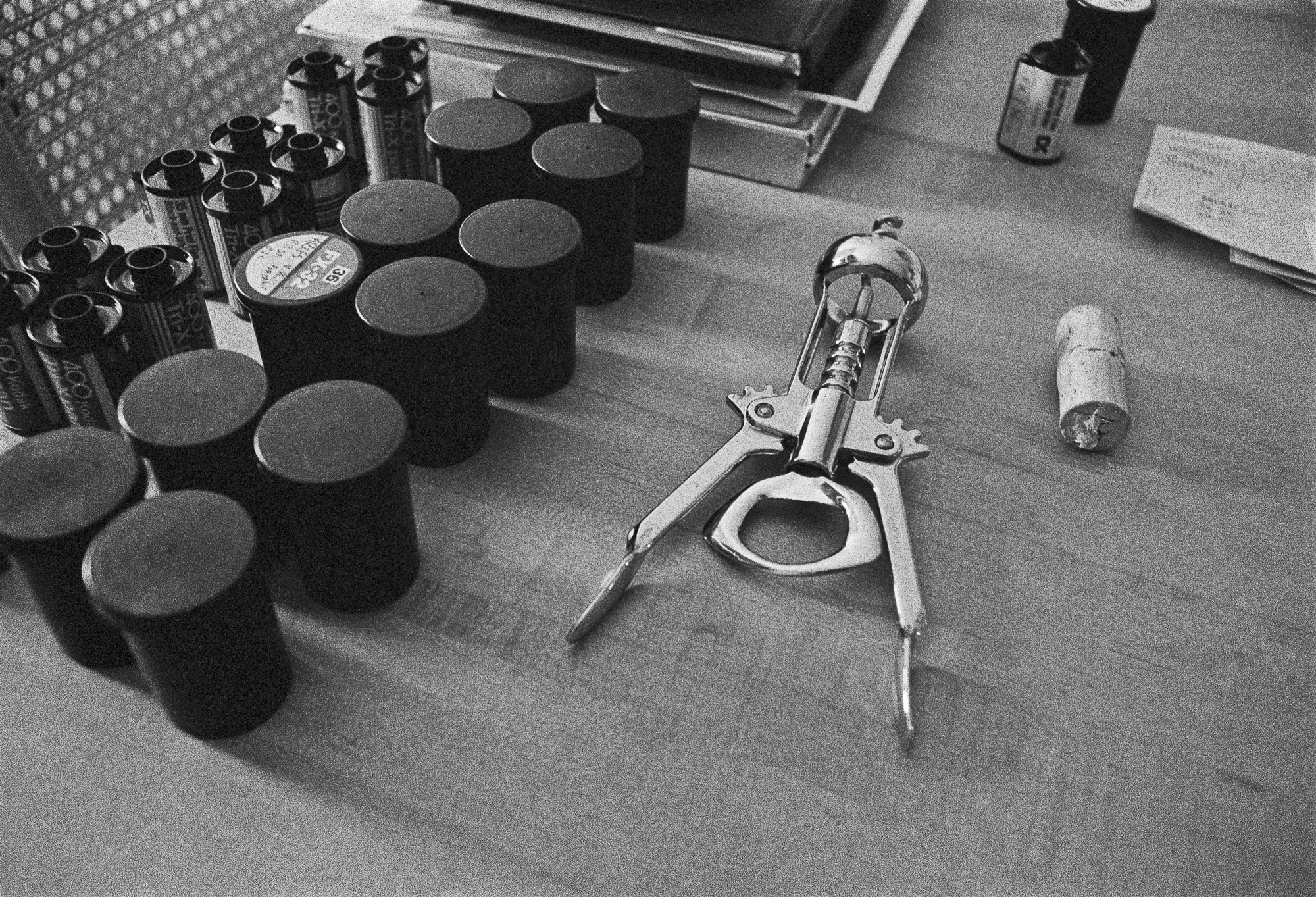



is this where we’re headed?
watching Hells Kitchen
longevity conservation

The lifetime of situation
BEFORE


Thoughts unreel, leading nowhere in particular: parrots leading monkey-brain. So many sketches started—more than one hundred drafts in the ‘pending’ zone—while lacking the embodied discipline and focus to finish any. Blah, blah, blah.
My situation is moving rapidly towards a major change, assuming I can manage, and that is the main focus of a very blurry existence. Blurred by fractured attention, internal and external stressors: societal instability, monetary insecurity, psycho-spiritual transience, mortality, inexorable cosmological flow, etc.
Reflecting on the four-year tenure here in rural western Colorado, the “Western Slope” as it is called, being on the west side of the main range of the Rocky Mountains. It’s been a mixed experience. Initiated in the depths of a bad cancer prognosis, it had a harsh essence from the beginning. Three of the past four years was spent, primarily, working full-time/remote for the CGS. Two of those years were with the most miserable excuse of a boss, the former State Geologist. With new management, the final 16 months were far better, but the profusion of way too many responsibilities simply burned me out. After a disturbing interaction with one of my colleagues—one whose work was an essential support element to mine—who had confided to me that he wasn’t going to do anything at work unless forced to, I decided to pull the plug with just three weeks notice. Precipitous, yes, but somehow necessary, given how life-time was/is slipping away at a rate that continues to disturb tranquil thought every day. It was a bit surprising how easy it was to ‘retire,’ and how quickly the job vanished in the rear-view mirror. How all that time spent since 2016 evaporated almost without a trace. I did leave the highly organized legacy in the form of their information/dataspace, built with my life-energy. That along with putting in place workflows that guaranteed—to the degree possible at my level of responsibility—the highest quality of their public-facing information.
“So what?” Richard Pryor asks.
The other focus of attention was to the house and the 13.5 acre property, the land. Once I left the job, the countdown started on the retreat from this place, first back to Arizona, and thence back to Iceland/Europe. All along, since I bought the property here, I’d spend hours each week day, many more on weekends, working on clearing up something or other. Cutting and collecting dead wood, pruning trees, moving rocks, weed-whacking, clearing defunct fencing, encouraging re-wilding, selectively reinforcing aging out-buildings and root cellar, removing vast amounts of detritus from same, improving the water drainage situation, setting up a large composting system, and re-doing the house interior and exterior to some degree (roofing, kitchen, bedroom, and bathroom especially). I have made a couple thousand images from the property, but rarely explicit before-and-after images, there is some evidence of the improvements. The main goal was to stabilize the physical infrastructures and fix things that bothered me or obstructed optimal enjoyment and operation of the facilities. This became, cumulatively, the dominant creative act. In retrospect, I could have done more careful documentation and explication here on the blog, following my efforts, but there wasn’t the will. If nothing else, the move from Golden saved me from paying $50K in rent over the years. I do have a potential buyer.
I do watch the sky here. With a 360-degree panorama (the property has few trees) and a view up to a hundred miles (the San Juan Mountains to the south, the Uncompaghre Uplift to the southwest, Hells Kitchen directly west, and Grand Mesa to the north), there is always much to contemplate in the sky. And aside from a paranoid neighbor from Southern California who recently installed a ridiculously bright night light on his garage, the area is known for its dark skies. This will be the greatest adjustment, as my place in Arizona is deep in the ponderosas. I’ll have to wait for Iceland to ponder and enjoy big skies again.
The economic demands of this particular period of existence, from 2016 until now, have impacted life in ways that confirmed my long-standing perspective on the pursuit of money—as Blake expressed in Laocoön—“Where any view of Money exists, Art cannot be carried on, but War only.” Formal creative pursuits were sporadic, and amounted to little more than recording fragments of life along the way, this blog being the only public venue aside from aporee::maps and participation in a few international streaming projects.
Contemplating my next situation includes mulling the question of how the physical dislocation and change will go down. The next temporary physical landing place is known, but far away, and the inertia of being here is now exceedingly large as precipitated by time and age. That and TOO MUCH STUFF. The Archive weighs heavily on mind, and, once moving, on body. In a cosmos that is transitory at all scales, the attempt to stop entropic decay is almost completely pointless. And through aging, The Archive becomes something of a retroactive creative crutch where delving into it is a poor substitute for actively creating *now*. At the same time it presses down heavily with the message that there is enough stuff in the world: no need or reason to make more. Best to simply live and spend time with Others instead.
Stay tuned. Oh, but wait, there will be stiff competition for eyeballs here, what with the ongoing socio-political conflagration about to receive another corpulent splash of gasoline… Sigh. I’d advise dropping social media.
AFTER
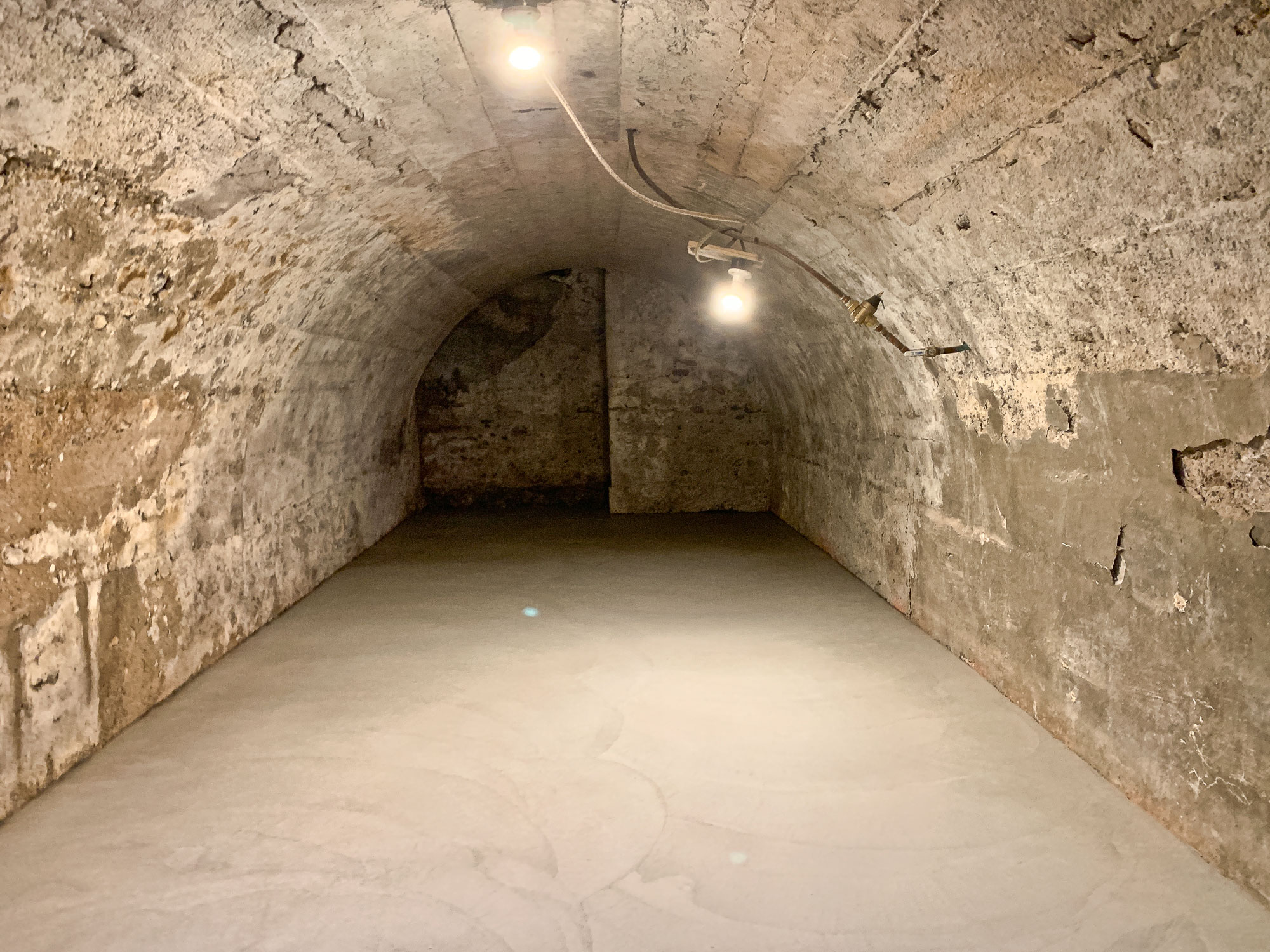

Case Study: Big Thompson Flood
On July 31, 1976, a powerful thunderstorm over Colorado’s Big Thompson Canyon unleashed a deluge that became one of the state’s most catastrophic natural disasters. Known as the Big Thompson Flood, this event claimed 144 lives, caused significant damage to infrastructure, and left a lasting impact on both the physical and social landscapes. This flood serves as a case study of the interplay between geologic conditions, meteorology, and human activity in a high-risk environment.

The Meteorological Trigger
The Big Thompson Flood was caused by an intense, stationary thunderstorm that dropped more than 12 inches of rain in just four hours over the steep canyon. The localized nature of the storm, combined with its high rainfall intensity, overwhelmed the Big Thompson River’s drainage system. This type of weather event is not uncommon in Colorado, where summer thunderstorms can deliver large amounts of precipitation over short periods. The semi-arid climate, combined with the region’s high topographic relief, creates conditions that are particularly conducive to flash flooding.
Thunderstorms of this magnitude occur when warm, moist air is forced upward by the mountainous terrain, cooling and condensing into heavy rainfall. In the case of the Big Thompson Flood, the storm’s stationary position ensured that all the precipitation fell within a confined area, greatly intensifying the flood’s impact.
Geological Setting of Big Thompson Canyon
Big Thompson Canyon, located in the Rocky Mountains of northern Colorado, is a steep and narrow valley carved over millions of years by the Big Thompson River. The canyon’s geology is dominated by granitic bedrock interspersed with loose sediments and colluvium, materials that are easily mobilized during heavy rainfall. The steep canyon walls and limited floodplain amplify the destructive potential of flash floods, as water rapidly accumulates and accelerates downhill.

One of the key factors in the severity of the 1976 flood was the canyon’s geomorphology. The steep gradient of the river increased the velocity of the floodwaters, allowing them to carry massive amounts of sediment, debris, and rock. This debris flow not only caused direct damage but also increased the erosive power of the water, undercutting slopes and triggering landslides that further contributed to the destruction.














